NOTE: the stuff below is just for entertainment. I am not suggesting this is what you should do or how you should do it. Consider it a fast way to ruin your gun. If you see something where I'm ruining mine please point it out!
After a few hours of messing around I was able to fix the bull barreled python previously discussed here.
It was like a rube goldberg contraption with a bunch of different things wrong but cancelling each other out. Unfortunately, if you fixed one thing, there was nothing to cancel the others.
In any case, if you have a bull barrel and no action work it don't make no sense. So we get to it.
Here's what we have to work with:
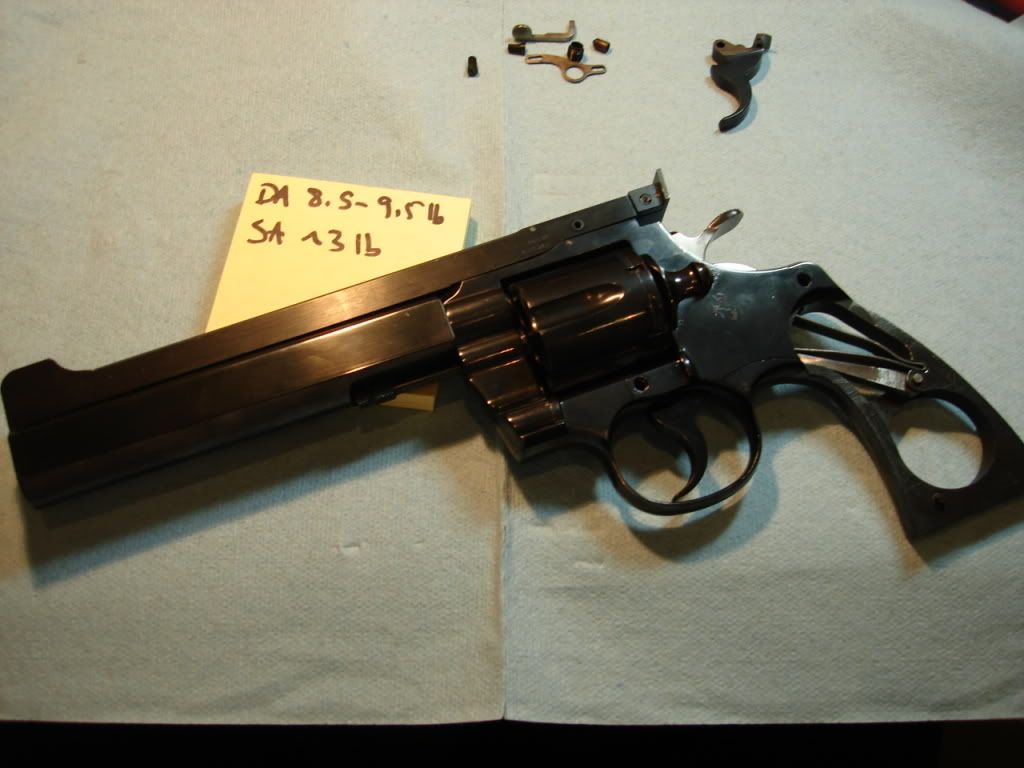
To eliminate stacking and cut a couple pounds off of DA we are going to install a trigger with a curved sear (trigger modified by Frank Glenn). A standard colt trigger is next to it for comparision:
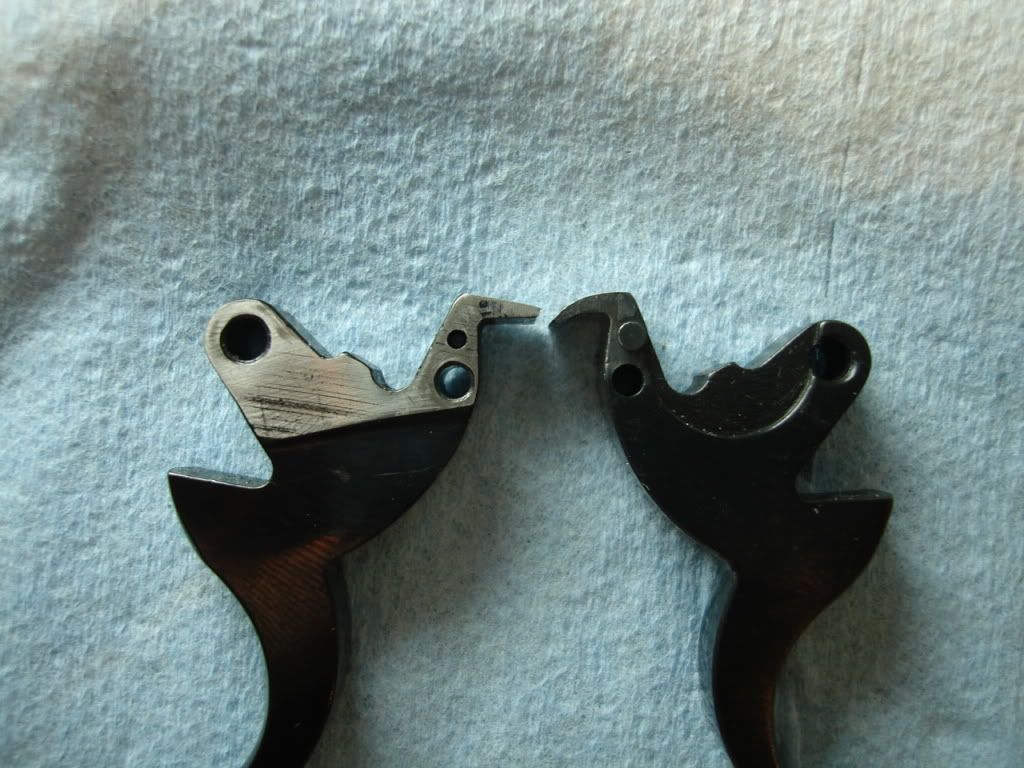

First we "drop it in" to see what we have to do. Of course it's always the same thing: cut a groove in the hammer toe. As you can see, the end of the sear is lower (since the entire sear is curved) which prevents the hammer strut from resetting. If the strut can't reset, you have no DA since you'll pull the trigger and it will go up, but not bring the hammer with it.

The solution is cutting a groove in the hammer toe where the sear meets it so it sets lower. So we remove the strut to make it easier to file. From left to right: the bench block we use to knock out the strut pin and the tool used to do so (made by Frank), the strut, spring and hammer. The point of the tool is to knock the struct pin out halfway so it stays in the hammer, which which makes it a lot easier to get back. We'll use the round file to cut the groove:
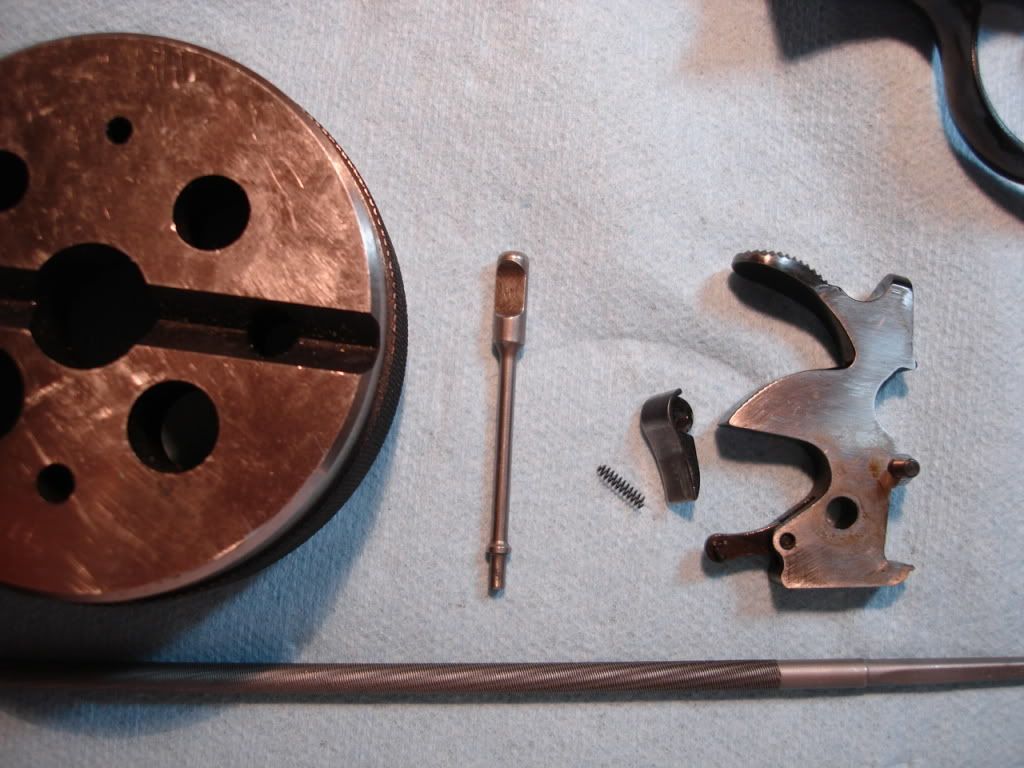
First pass:

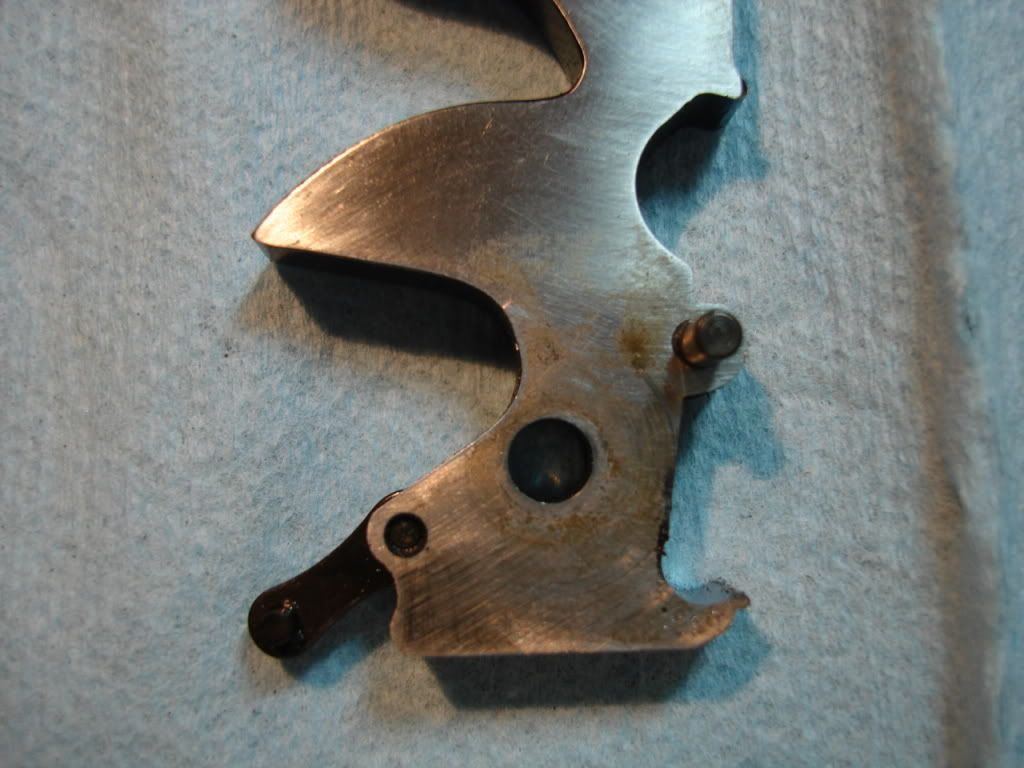
A fair amount of material gets removed, but less than we will probably need. However, since you can't put metal back, it makes sense to put reassemble the hammer and figure out how much more there is to do.
A nice trick for getting the hammer strut spring to stay is to use a heavy grease on the end to make it stick where it should be:
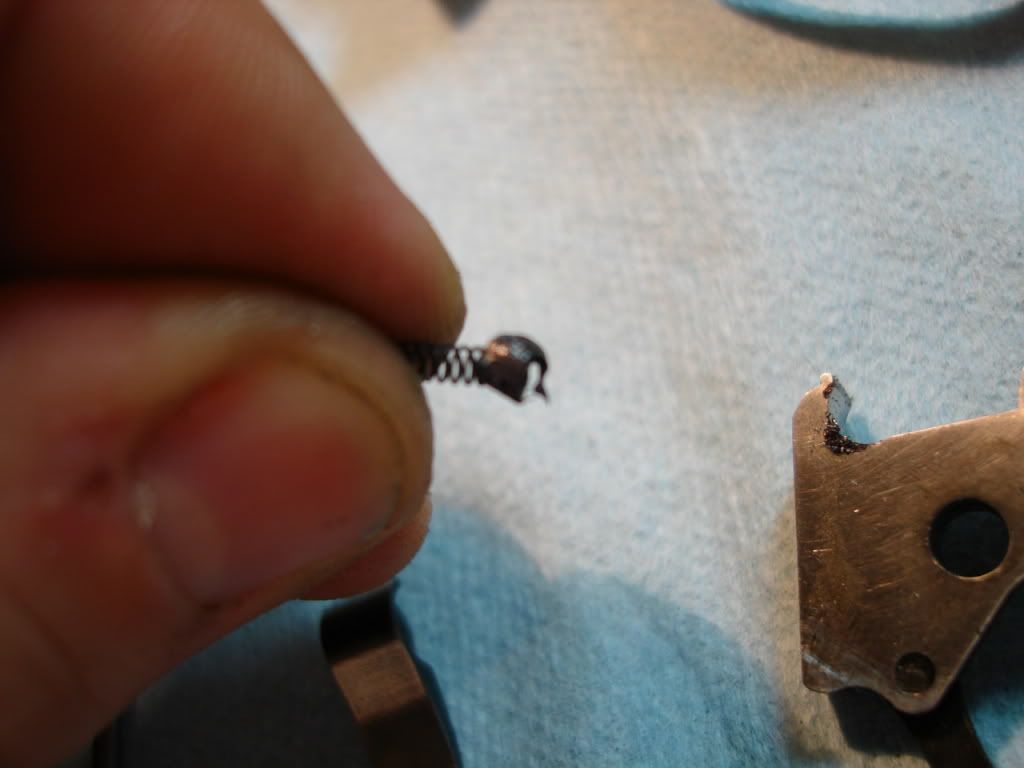
Ok, not as bad, but still more to go:
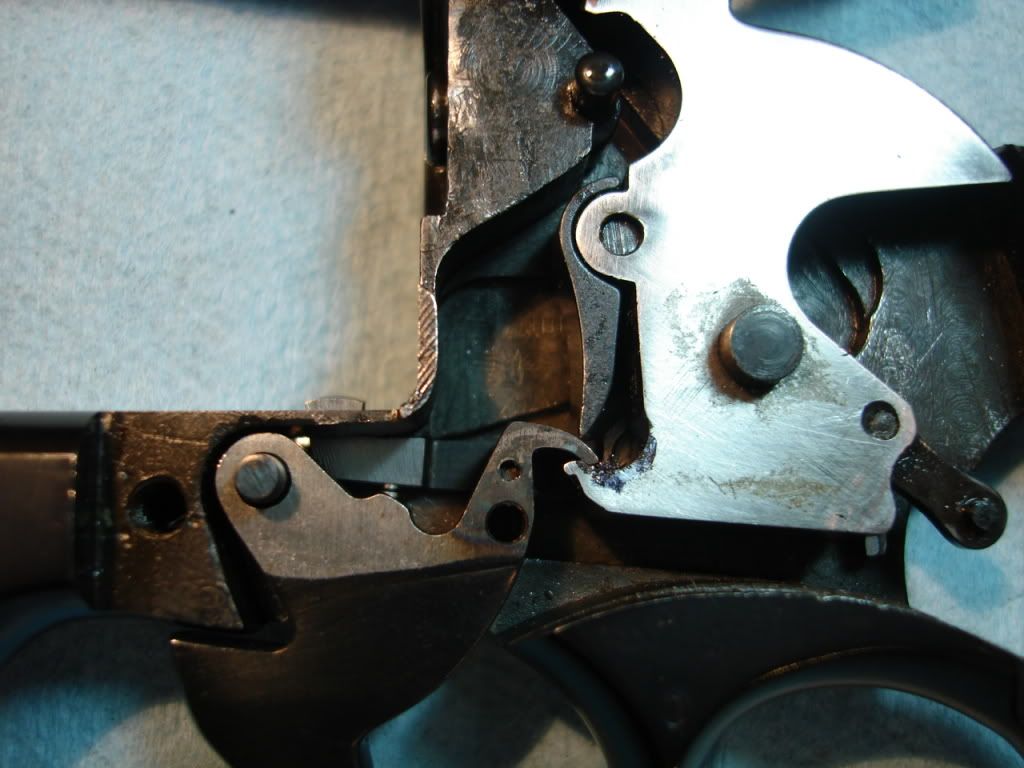
After another round we get:
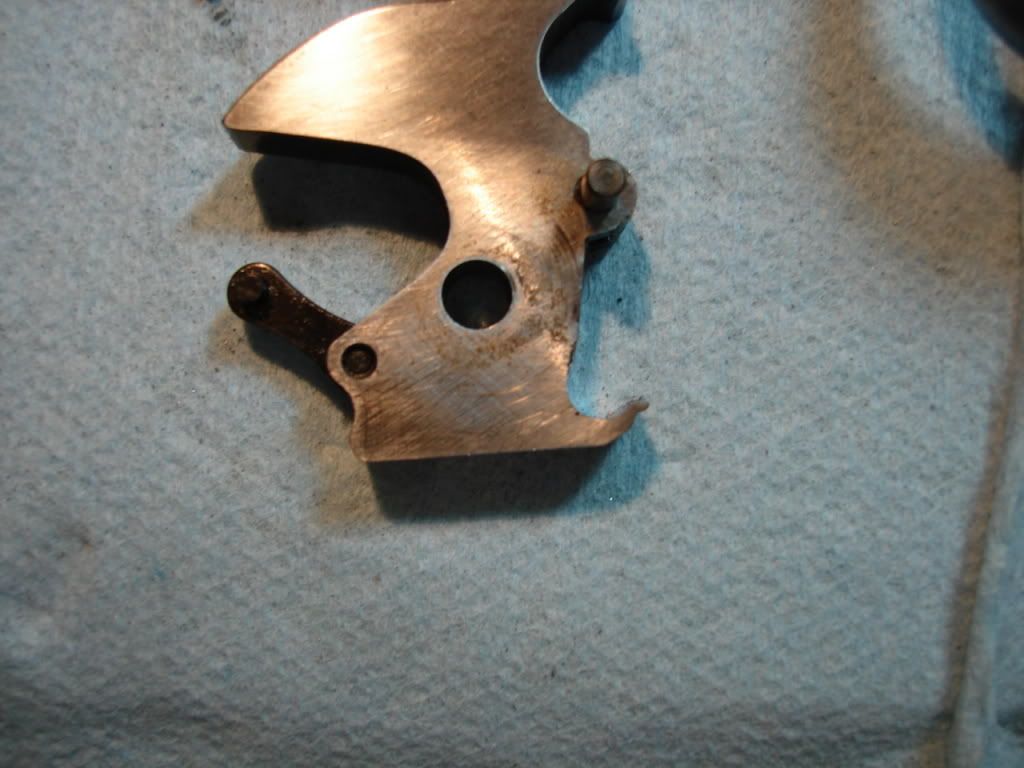
Which lets the strut reset:
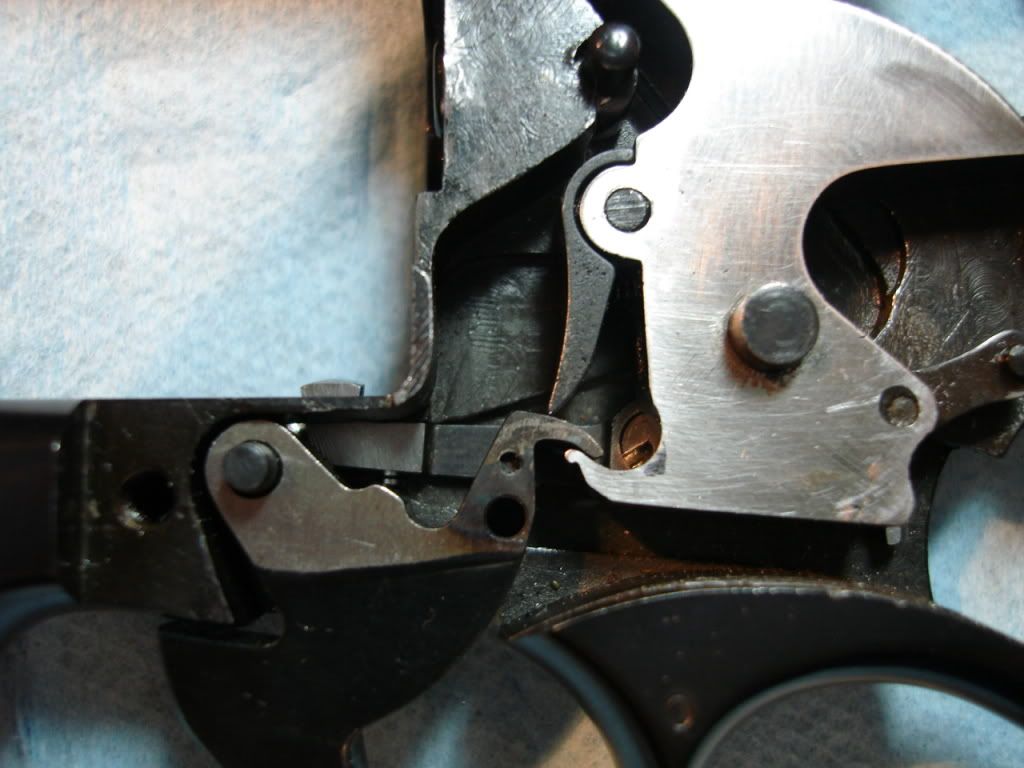
Note that without the rebound the hammer is tilted slightly forward more which means that the strut may not reset even though it would with the rebound in place. However, I like to leave a bit of space since DA is often rapid fire, and if the fit between strut and sear is too tight, you'll get failures to reset pretty easily.
OK. So now the strut resets. Of course, since it's a I frame, if you change one thing, you have to change 10.
For example: since the trigger has a slightly different resting place it can throw off bolt/hand interplay. In our case, the rebound no longer picks the bolt up instantly, which means the top hand starts pushing on the cylinder before the bolt has withdrawn:
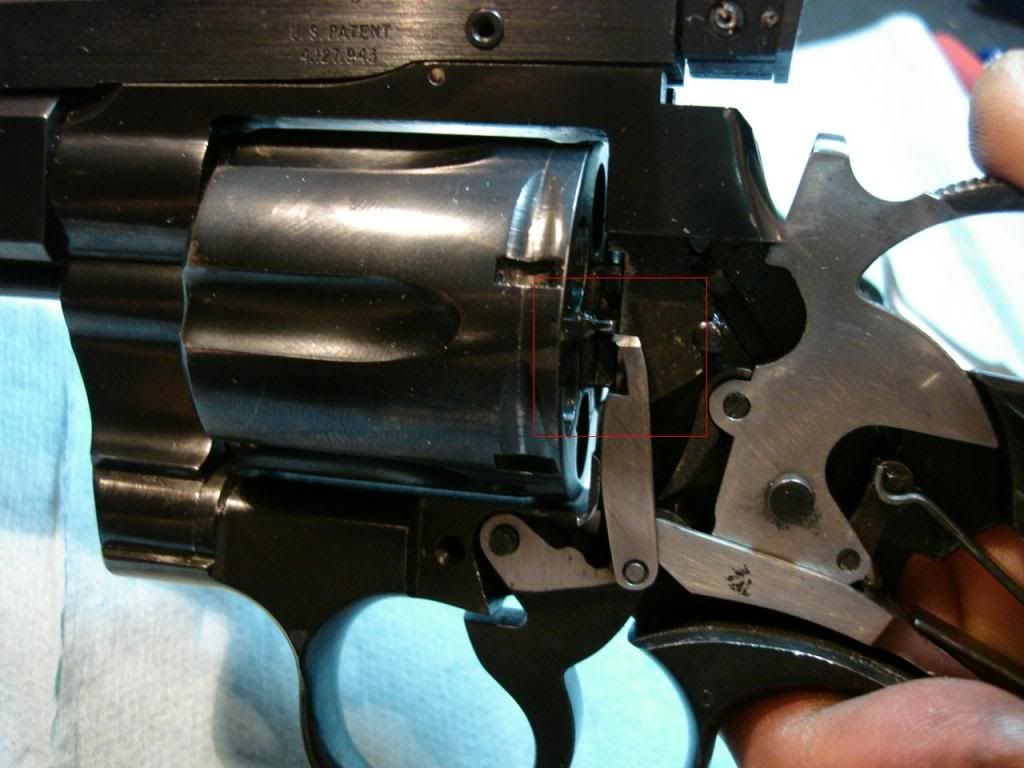
Also the hammer can't get cocked since the lower hand locks up on the cylinder before the sear can go in the cocking notch.
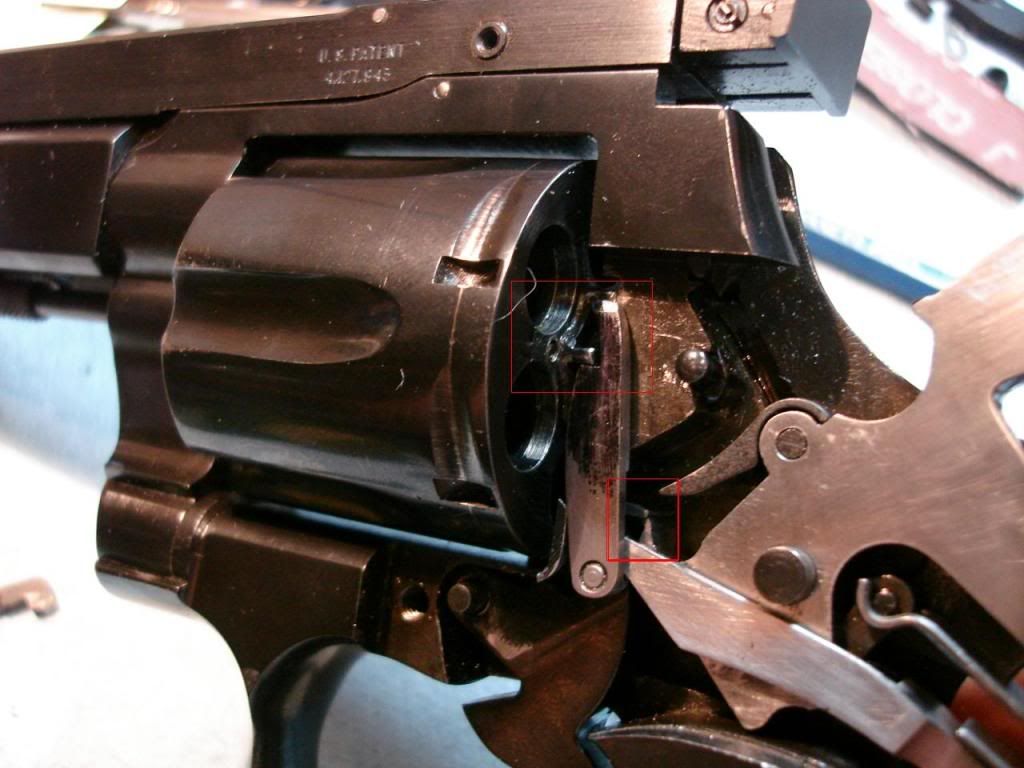
The wrong thing to do at this point is to start filing on the hand. This may be necessary at the end, but the first thing to do is to fix the problem in the lower red rectangle above: the trigger must raise the hand up fairly high to get around the top of the hammer before the sear eventually gets into the cocking notch. Unfortunately, when the sear reaches the cocking notch the hand will be significantly lower. Thus, if you try to solve the problem by merely filing the bottom hand, by the time the sear reaches the cocking notch there will be a gap. This means the cylinder will be supported more by the bolt, rather than the bottom hand, which is not a good setup.
First, we'll stone the trigger, which we have to do anyway since it's edge is a bit sharp after the torch. Stoning will make it shorter and the problem above less pressing. We'll then take some material off of the end of the hammer toe before messing with the hand.
Here's the stoning fixture. Frank does it freehand, but I don't trust my filing abilities to that extent:
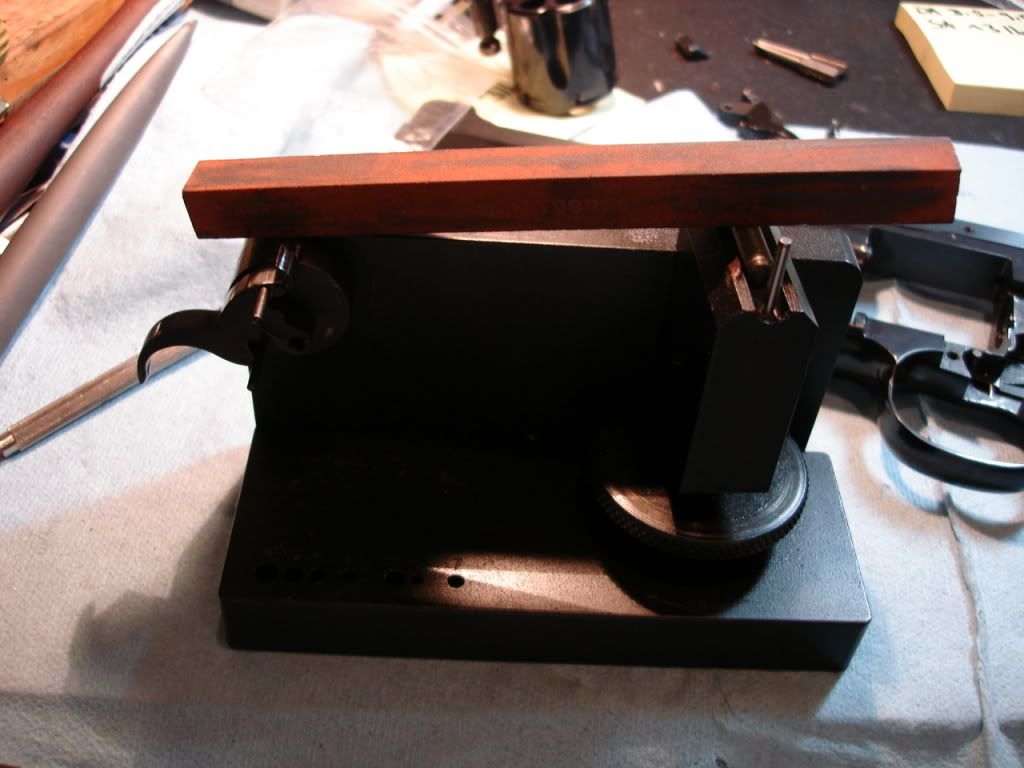
And here's the rough angle you want:
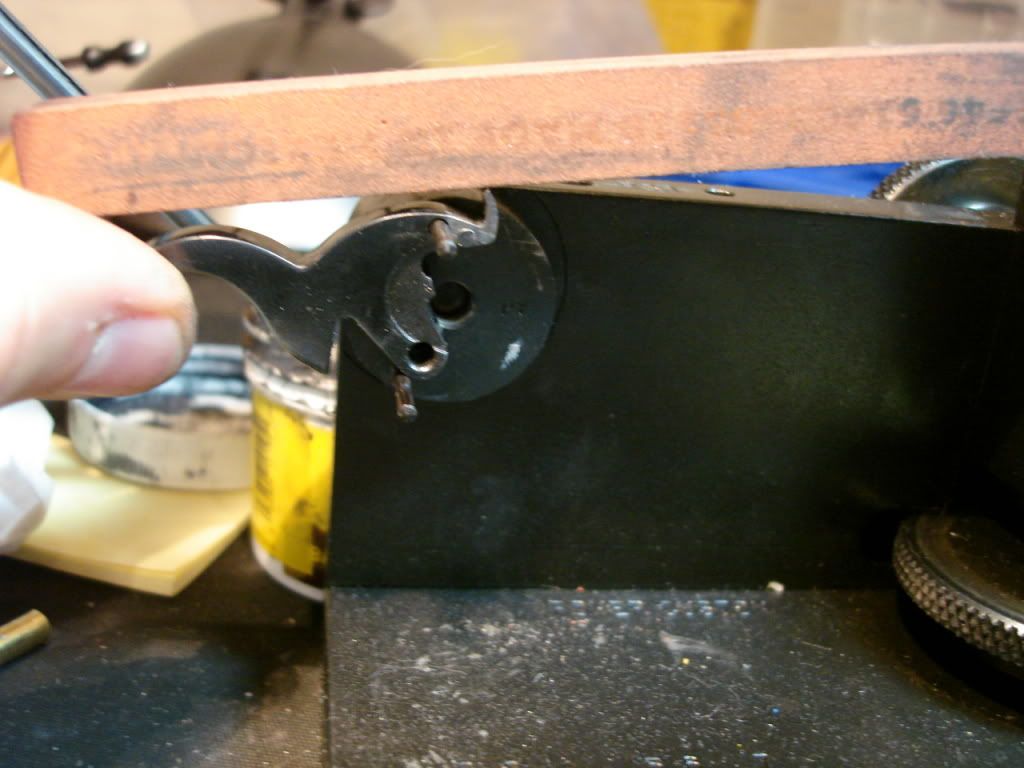
Unfortunately I didn't take clear pictures of before / after so you'll have to use your imagination.
We now enter the NEVER DO THAT EVER part of the programme. We're going to modify the cocking notch. If you do this to your gun it's going to get ruined. For stock sears the shop manual says to throw away hammers with cocking notch alterations. So does dfariswheel.
However, since we are using a curved sear things a slightly different. The angle is different enough that often if you don't do anything to the notch the SA will usually really suck (creep, heavy, bad). If you make the notch more like a right angle and cut the lip of the hammer down, it can escape easier and you can make it as light as you like.
However, again, don't do this at home. For example, Grant Cunningham doesn't do this when he installs such triggers because of concerns about liability. And there are NO GUARANTEES THAT I AM DOING THIS RIGHT. So consider this just entertainment.
However, since I'm not going to sell this gun, we can not worry about most of the above. First put the hammer in a small vise and use a sharpie to mark the general area so that it's easy to tell how much got removed (and whether it was even):
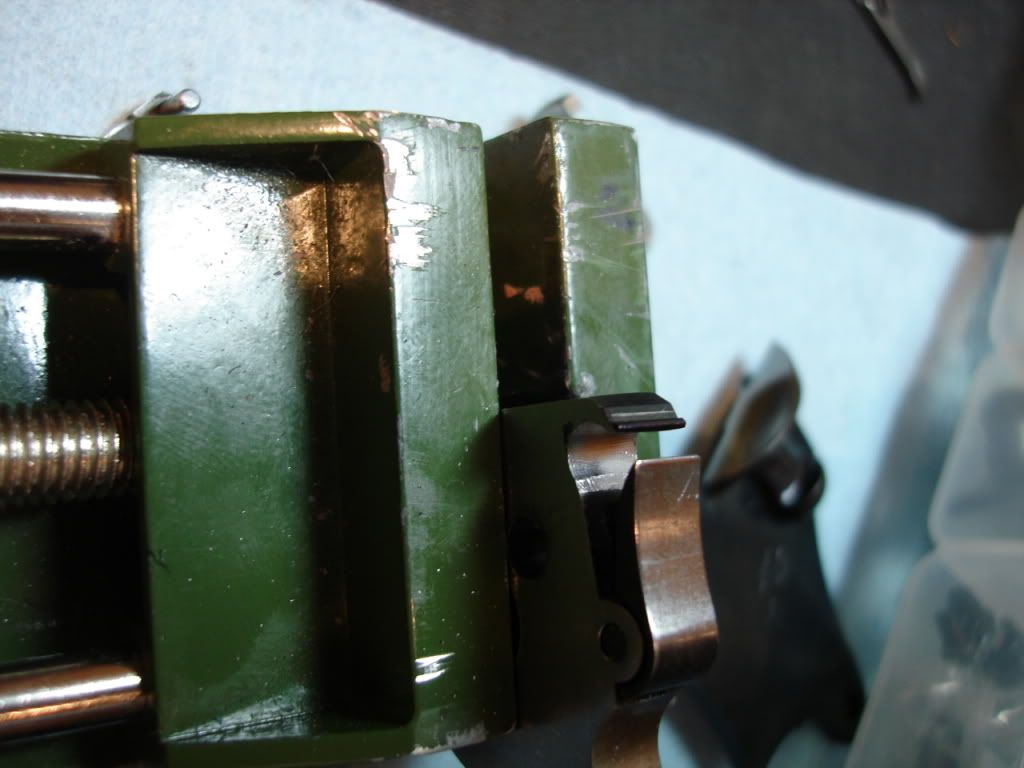
Now file some. Unfortunately, I filed more than is a good idea. It is far from getting push off, but it's not really the right way to do things. I should have been more careful. In any case, here's the hammer:
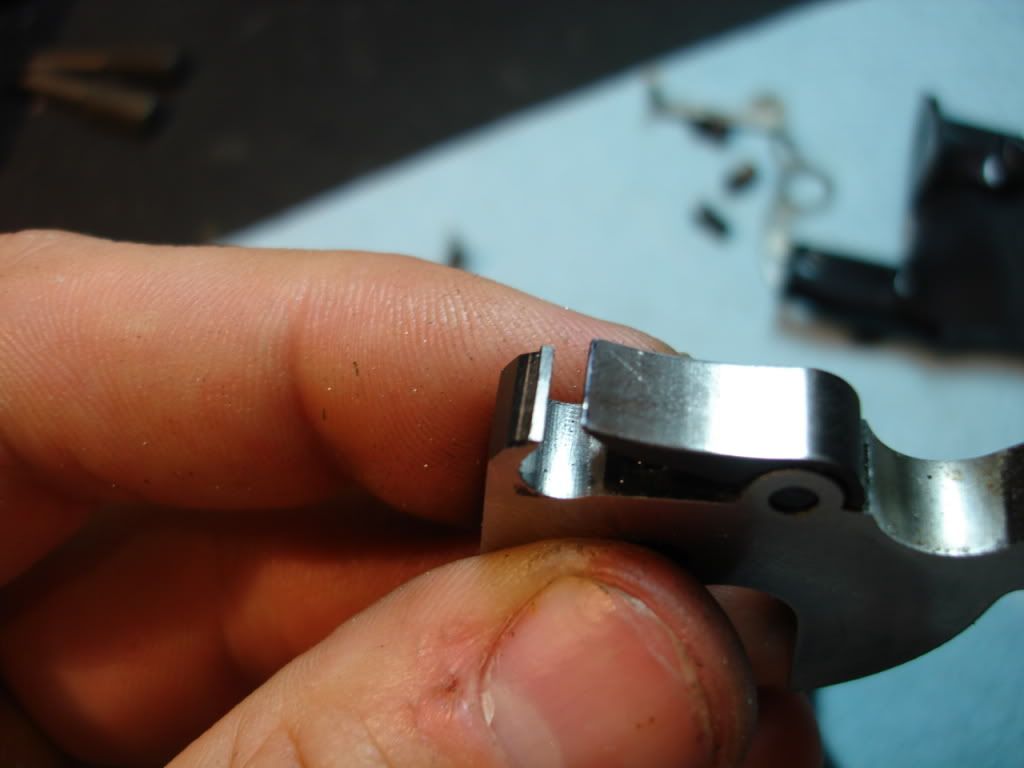
And as compared to a stock one:
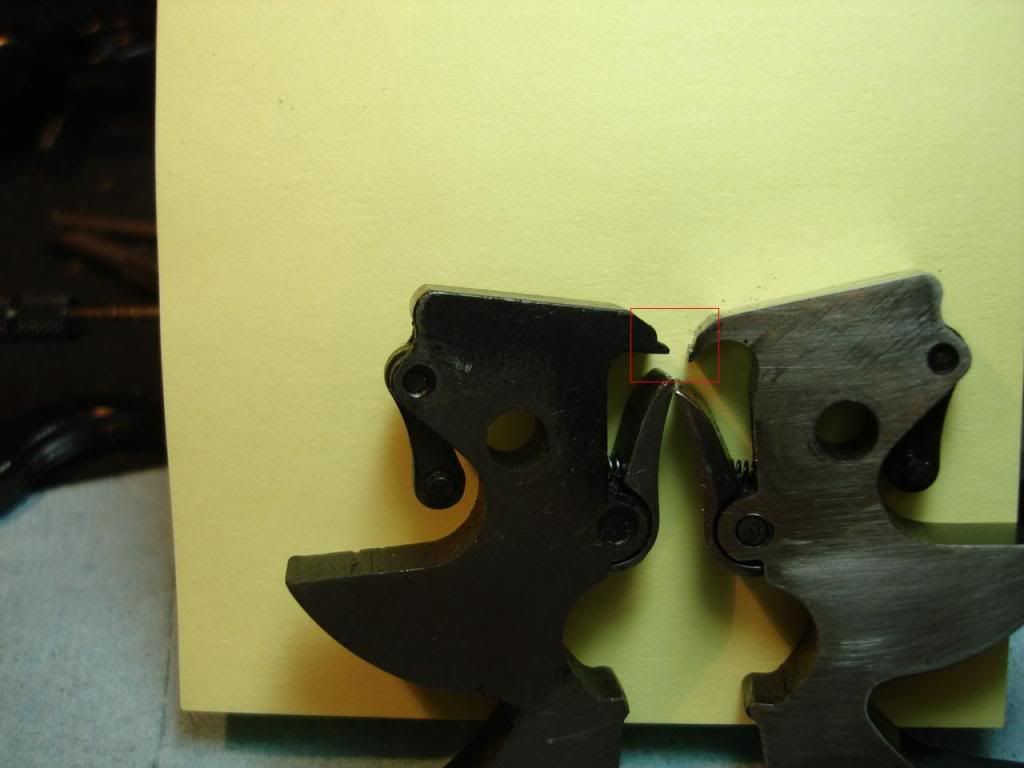
In the end I also had to take some off of the top and bottom parts of the hand, however it was just a few strokes of the file.
After putting everything back together the nice result is that with no other modifications the DA drops from 8.5-9lbs to 7lbs (and with the cylinder open is consistently 6.2lbs) and there is no stacking. Feels much nicer:
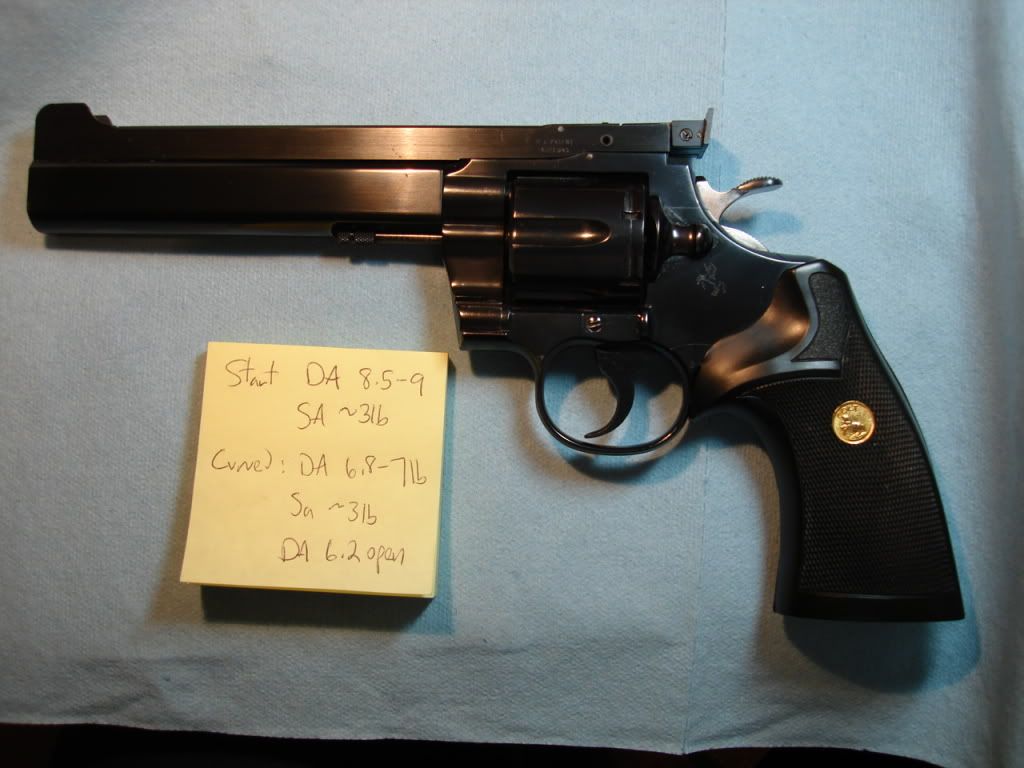
There's probably some room left to fuss with the mainspring and such, but that will get left til another time.

No comments:
Post a Comment